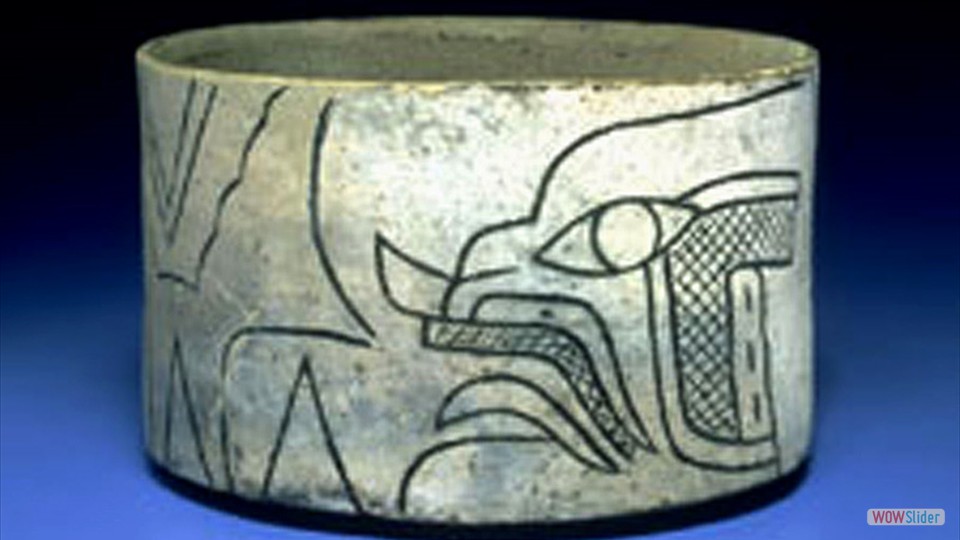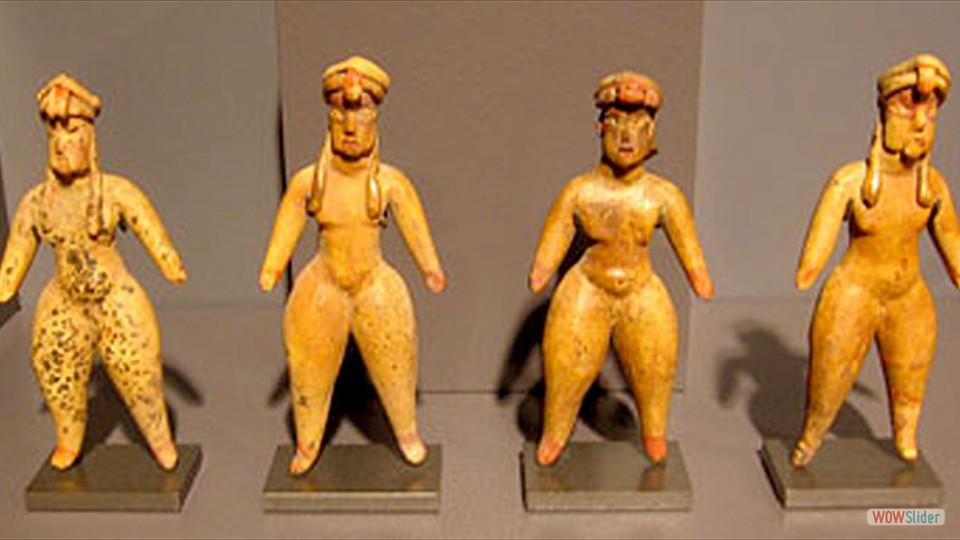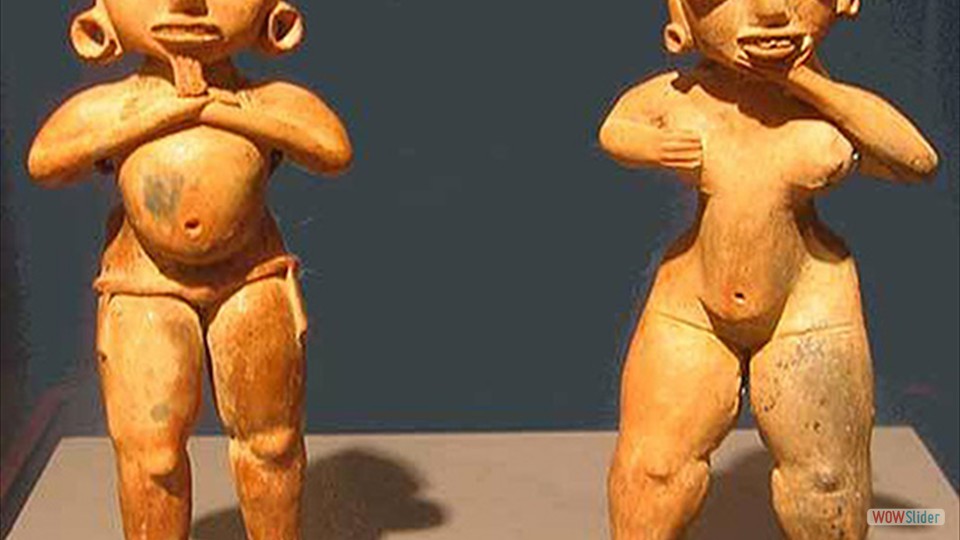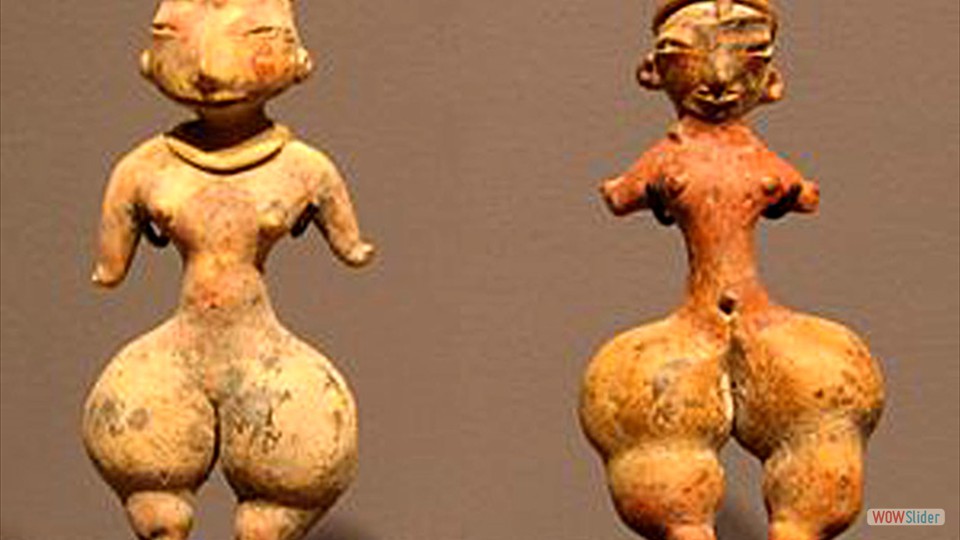Tlapacoya is an important archaeological site in Mexico, located at the foot of the Tlapacoya volcano, southeast of Mexico City, on the former shore of Lake Chalco. Tlapacoya was a major site for the Tlatilco culture. Tlapacoya is known in particular for Tlapacoya figurines. These sophisticated earthware figurines were generally created between 1500 and 300 B.C.E. and are representative of the Preclassic Period.
Tlapacoya was also a manufacturing center for so-called "Dragon Pots" These flat-bottomed cylindrical bowls have white or buff surfaces incised with almost abstract Olmec-style drawings, generally of were-jaguars.
In addition to the figurines and other artifacts from the 1500 - 300 B.C.E. human and animal remains have been found, some of which could be as much as 25,000 years old. Silvia Gonzelez et al. have published research claiming that "one Tlapacoya skull is the first directly dated human in Mexico with an age of 9730 years ago. If confirmed, this would be the 2nd oldest human remain found in the Americas, after the Buhl woman of Idaho. The most controversial findings in Tlapacoya are artifacts which have been dated by some researchers to as early as 25,000 years ago. If verified, these would be some of the earliest dates for human habitation in the Americas and would discredit prevailing theories of the timing of settlement of the New World. The evidence for these much-earlier dates consists of the bones of black bear and two species of deer which appeared in middens associated with 22,000-year-old hearths, as well as a curved obsidian blade which was found beneath a buried tree trunk. The bones were 24,000 years ago and 21,700 years ago (Lorenzo and Mirambell 1999:488-489). The obsidian blade was found under a tree trunk which dated to 24,000 years ago and was itself dated, using the obsidian hydration method, to between 21,250 and 25,000 years ago. These very early pre-Clovis dates have been challenged by other archaeologists.
The site was uncovered during the construction of a Mexico City-Puebla freeway in the 1960s and 1970s. It has since been almost completely obliterated by freeway construction.







 1
1 2
2 3
3 4
4 5
5 6
6